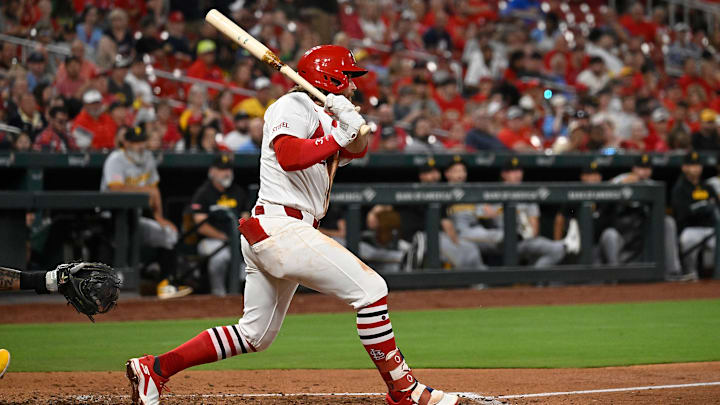A recent trade proposal highlighted by Ryan Divish of the Seattle Times has sparked discussion as to why the Mariners are left with few options to improve their roster. Purely exercise, the proposal serves as a reminder of the risk Seattle would need to take to bolster their lineup.
The proposed trade involves the Mariners sending catcher Harry Ford, infielder Michael Arroyo, and another prospect to the Marlins. In return, the Marlins would trade right-handed pitcher Edward Cabrera to the Cardinals, who, in turn, would send infielder Brendan Donovan to the Mariners. This three-team trade attempts to address specific needs for each team but raises serious concerns.
For the Mariners, surrendering a top catching prospect like Harry Ford, alongside infielder Michael Arroyo, is a steep price for Donovan. Though a versatile infielder, he has averaged just 10 home runs a year and hasn't really improved since his rookie season. The Cardinals, deep with offensive talent, are in search for reliable pitching, making Cabrera an attractive acquisition. The Mariners would need to capitalize on the Cardinals' drama with an under-the-radar trade and sneak Donovan away from St. Louis in order to pull this off.
Donovan is reportedly seeking a long-term deal in St. Louis, but the Cardinals hold three years of team control. They have no incentive to trade him unless they face financial or roster constraints closer to 2026 or 2027.
Mariners Rumors: What trades could still be on the table for Seattle?
The Mariners’ pursuit to improve their infield has been underwhelming, to say the least. The challenge is amplified by the ever-changing dynamics of MLB. The expanded 12-team playoff format has diminished the number of teams willing to rebuild, and the quick turnaround of franchises like the 2023 Rangers, 2023 Diamondbacks, and 2024 Royals underscores a new reality — teams are less inclined to trade for prospects unless it's an offer they can't refuse.
A recent report sheds light on the challenges the Mariners face in trade discussions,Silly details of broken-down Mariners-Red Sox Luis Castillo trade talks coming to light illustrated how promising talks can easily fall apart. In this market, the Mariners are being left out to dry. They prefer trading prospects over experienced players, therefore evoking the need to require a third team willing to part with a proven commodity and complicating negotiations.
How can the Mariners realistically finish their roster this offseason? They are challenged with a broader issue in baseball’s current climate. As teams grow reluctant to dismantle and rebuild, the Mariners must navigate a shrinking trade market with creativity. Whether they can find the right pieces remains uncertain.
